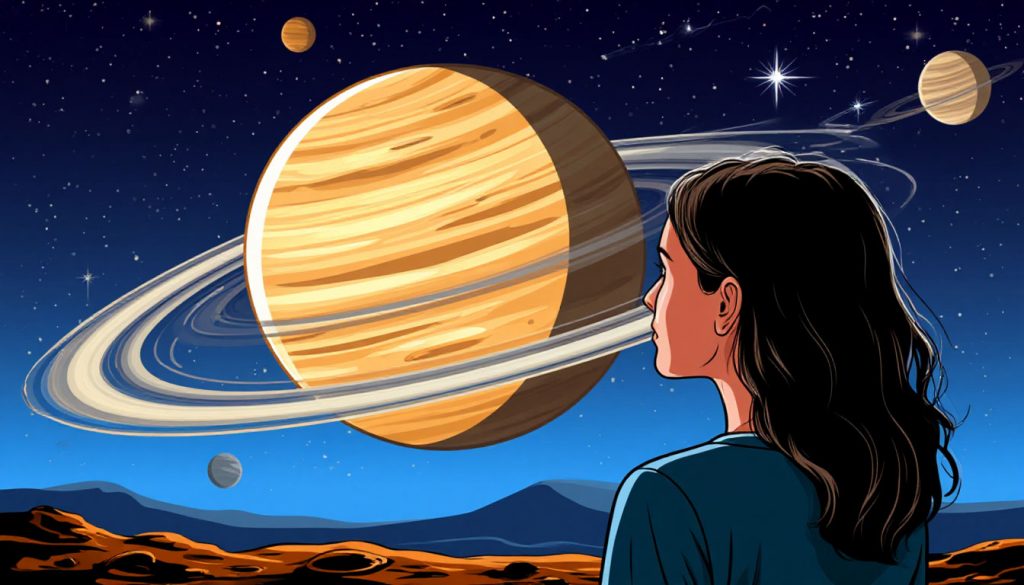Saturn’s rings are among the most iconic and beautiful features in our Solar System. First observed in 1610 by Galileo Galilei, these shimmering bands around the planet continue to amaze astronomers and stargazers alike. But beyond their beauty lies a fascinating structure. So, how are Saturn’s rings actually built, and what are they made of?
What Are Saturn’s Rings Made Of?
Saturn’s rings are not solid—they are made of countless particles that range in size from tiny dust grains to chunks as large as houses. These particles are mostly composed of:
- Water ice (about 90–95%)
- Rocky debris and dust
- Small amounts of organic compounds
The ice reflects sunlight, which gives the rings their bright appearance when viewed from Earth.
How the Rings Are Arranged
Saturn’s rings are incredibly thin compared to their width. While the ring system stretches more than 280,000 km (175,000 miles) wide, it is only about 10 meters (30 feet) thick in some areas.
The rings are divided into seven main sections, named in the order they were discovered: D, C, B, A, F, G, and E. The most prominent and visible ones are the A, B, and C rings. Between some of these rings are gaps, like the well-known Cassini Division, a dark band between the A and B rings.
These gaps are often created by Saturn’s moons, which shape the rings through their gravitational forces.
The Role of Saturn’s Moons
Saturn has over 140 confirmed moons, and many of them interact with its ring system. Some moons, called shepherd moons, orbit near the edges of rings and help keep the particles in place with their gravity. Others create waves, gaps, or clusters of particles.
For example, the moon Pan orbits inside the Encke Gap and clears the space around it, maintaining the gap’s structure.
Where Did Saturn’s Rings Come From?
There are two main theories about the origin of the rings:
- Destroyed Moon Theory – A moon or comet came too close to Saturn and was torn apart by its gravity. The debris spread out and formed rings.
- Primordial Theory – The rings may be leftover material from the early days of the Solar System that never formed into a moon.
Recent data from the Cassini spacecraft suggests the rings might be relatively young—only about 100 million years old—but scientists are still investigating.
Will the Rings Last Forever?
Saturn’s rings are slowly disappearing. A process called “ring rain” causes particles from the rings to fall into Saturn’s atmosphere. This loss is expected to continue, and the rings may vanish completely in about 100 million years—a short time in cosmic terms.
For now, though, Saturn remains the “jewel of the Solar System,” offering a stunning reminder of the complexity and beauty of space.
Glossary
- Water ice – Frozen water, the main component of Saturn’s rings.
- Cassini Division – A large gap between Saturn’s A and B rings.
- Shepherd moons – Small moons that help shape and maintain ring edges.
- Ring rain – The gradual loss of ring particles falling into the planet.
- Primordial – From the earliest stages of the Solar System.


